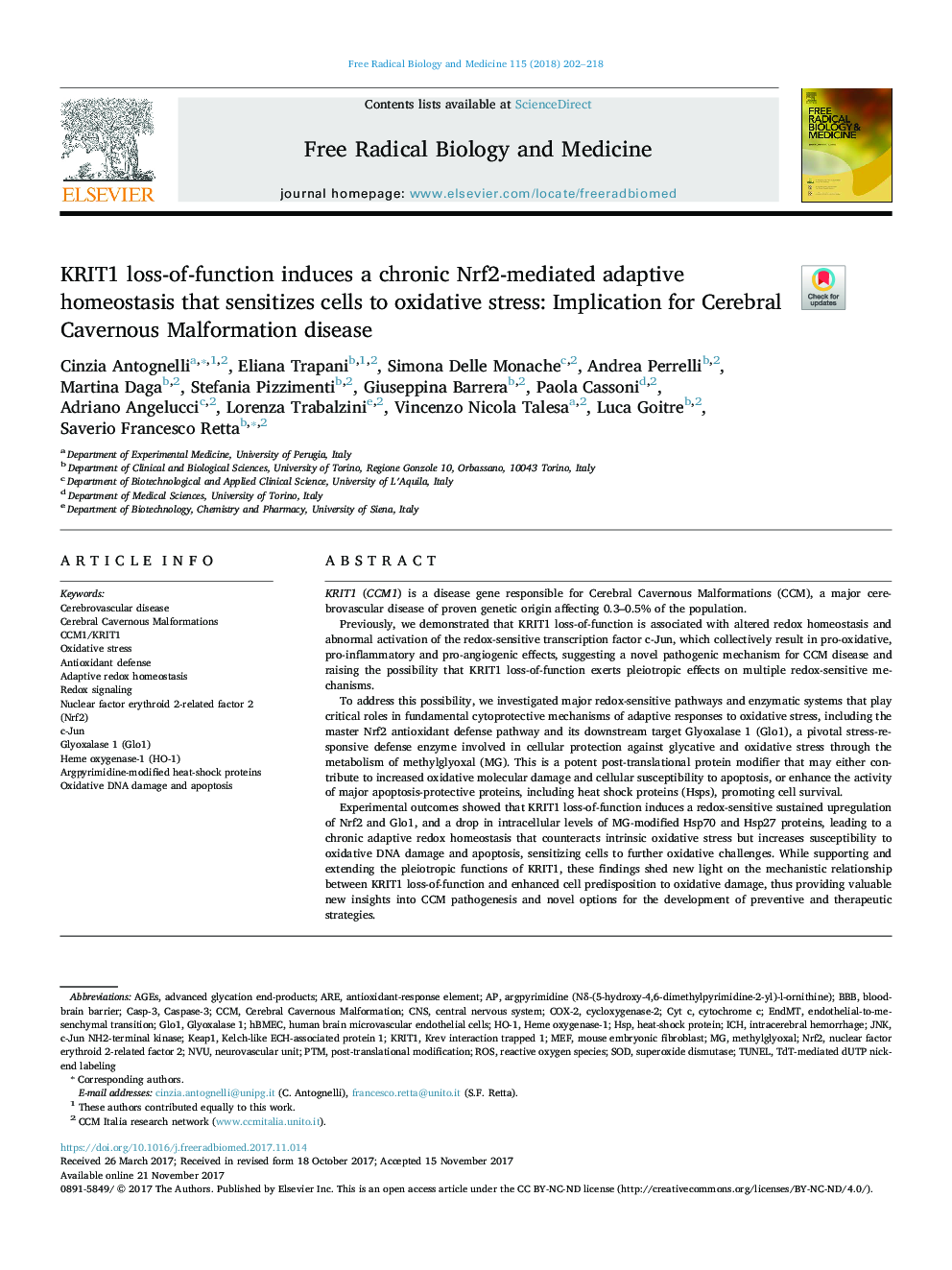| Article ID | Journal | Published Year | Pages | File Type |
|---|---|---|---|---|
| 8266201 | Free Radical Biology and Medicine | 2018 | 17 Pages |
Abstract
KRIT1 loss-of-function causes a persistent activation of the redox-sensitive transcription factors c-Jun and Nrf2 and consequent upregulation of downstream targets, including cycloxygenase-2 (COX-2), heme oxygenase-1 (HO-1) and glyoxalase 1 (GLO1). While the c-Jun/COX-2 axis promotes pro-oxidant and pro-inflammatory effects, the Nrf2/HO-1 and Nrf2/GLO1 pathways mediate adaptive antioxidant responses that counteract these effects by limiting ROS* and MG intracellular accumulation, thus contributing to reduce a vicious cycle of oxidative stress and providing an adaptive defense for long term cell survival. However, this sustained adaptive redox homeostasis occurs at the expense of other cytoprotective mechanisms, including the MG-dependent formation of cytoprotective AP-Hsp70 and AP-Hsp27 protein adducts, leading to enhanced cell susceptibility to oxidative DNA damage and apoptosis, and sensitizing cells to additional stressful insults. Inter-individual differences in Nrf2-mediated adaptive defense mechanisms might influence susceptibility to CCM disease onset and progression. *The generic ROS term refers to O2
- âand H2O2as well as to putative secondary oxidative products that might be implicated without certainty.214
- âand H2O2as well as to putative secondary oxidative products that might be implicated without certainty.214
Keywords
HBMECcycloxygenase-2AGEsHspCOX-2GLO1HO-1Cyt CNrf2EndMTMEFNVUHeme oxygenase-1c-Jun NH2-terminal kinaseJnkKRIT1PTMHeme Oxygenase-1 (HO-1)keap1CCmROSpost-translational modificationEndothelial-to-mesenchymal transitionCasp-3Cerebrovascular diseaseTdT-mediated dUTP nick-end labelingOxidative stressTUNELc-Junintracerebral hemorrhageCNSAntioxidant defenseSODBBBHuman brain microvascular endothelial cellsSuperoxide dismutasecytochrome ccentral nervous systemRedox signalingNuclear factor erythroid 2-related factor 2 (Nrf2)antioxidant-response elementnuclear factor erythroid 2-related factor 2Blood-brain barrierMethylglyoxaladvanced glycation end-productsICHmouse embryonic fibroblastCerebral cavernous malformationCerebral cavernous malformationsAREneurovascular unitKelch-like ECH-associated protein 1heat-shock proteinCaspase-3Glyoxalase 1Reactive oxygen species
Related Topics
Life Sciences
Biochemistry, Genetics and Molecular Biology
Ageing
Authors
Cinzia Antognelli, Eliana Trapani, Simona Delle Monache, Andrea Perrelli, Martina Daga, Stefania Pizzimenti, Giuseppina Barrera, Paola Cassoni, Adriano Angelucci, Lorenza Trabalzini, Vincenzo Nicola Talesa, Luca Goitre, Saverio Francesco Retta,
